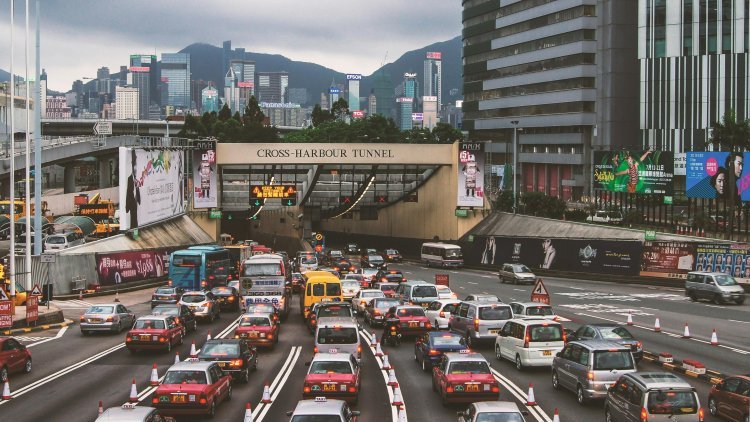What Are the Traffic Rules?
Traffic rules are regulations designed to ensure safe and orderly movement of vehicles and pedestrians on roads, preventing accidents and promoting road safety.

Traffic rules are essential for maintaining order on the roads and ensuring the safety of all road users, including drivers, pedestrians, and cyclists. Understanding and following these rules not only prevents accidents but also helps avoid penalties and legal issues. This comprehensive guide covers the fundamental traffic rules that every driver and pedestrian should know.
1. Obey Traffic Signals and Signs
Traffic signals and road signs are designed to regulate the flow of vehicles and pedestrians. Common signals include:
- Red Light: Stop completely and wait until it turns green.
- Yellow Light: Slow down and prepare to stop.
- Green Light: Proceed with caution, ensuring the intersection is clear.
- Stop Sign: Make a full stop before proceeding.
- Yield Sign: Allow other road users to pass before proceeding.
- Speed Limit Signs: Adhere to the posted speed limit to maintain safe driving conditions.
Ignoring traffic signals and signs can lead to accidents, fines, or license points.
2. Follow Speed Limits
Speed limits vary based on location and road type. Some general guidelines include:
- Residential Areas: 25-35 mph
- Highways: 55-70 mph
- School Zones: 15-25 mph
- Work Zones: Reduced speed limits, often posted with signs
Exceeding the speed limit increases the risk of accidents and can result in hefty fines.
3. Maintain Lane Discipline
Proper lane discipline ensures smooth traffic flow and reduces congestion. Follow these rules:
- Stay in your lane unless overtaking or making a turn.
- Use indicators before changing lanes.
- Avoid unnecessary lane switching.
- Use the right lane for slower speeds and the left for overtaking.
4. Use Indicators and Signals
Turn signals communicate your intentions to other drivers, reducing the risk of collisions. Always use:
- Left indicator when turning left or changing to the left lane.
- Right indicator when turning right or changing to the right lane.
- Hazard lights when stopped due to an emergency.
5. Do Not Drink and Drive
Driving under the influence of alcohol or drugs is a major cause of road accidents. Most jurisdictions have strict DUI laws, with penalties including fines, license suspension, or imprisonment. If you've consumed alcohol, use a designated driver, taxi, or ride-sharing service.
6. Wear Seat Belts and Helmets
Seat belts and helmets significantly reduce injury risks in accidents:
- Drivers and Passengers: Always wear a seat belt.
- Motorcyclists and Bicyclists: Wear a helmet for protection.
- Children: Use appropriate car seats or booster seats.
Failure to wear safety gear can result in fines and increased injury risk.
7. Avoid Distracted Driving
Distracted driving is a leading cause of accidents. Common distractions include:
- Using a mobile phone while driving.
- Adjusting the radio or GPS while in motion.
- Eating or drinking.
- Engaging in conversations that divert attention from the road.
To stay safe, keep both hands on the wheel and focus on the road.
8. Yield to Pedestrians
Pedestrian safety is crucial, especially in urban areas. Follow these rules:
- Stop for pedestrians at crosswalks.
- Avoid blocking pedestrian paths.
- Be cautious in school zones and near bus stops.
Failing to yield can lead to serious accidents and legal consequences.
9. Follow Parking Rules
Improper parking can cause congestion and inconvenience. Ensure that you:
- Park only in designated areas.
- Do not block driveways or fire hydrants.
- Follow posted parking restrictions.
Illegal parking may lead to fines or towing of the vehicle.
10. Use Headlights Properly
Headlights improve visibility and signal your presence to other drivers. Use them appropriately:
- Turn on headlights in low visibility conditions (rain, fog, dusk, or night).
- Use low beams in residential areas and high beams on dark, empty roads.
- Avoid using high beams in city areas or when approaching other vehicles.
11. Be Aware of Emergency Vehicles
Emergency vehicles like ambulances and fire trucks have the right of way. When you hear sirens:
- Pull over to the side and stop if necessary.
- Avoid blocking intersections.
- Resume driving only when it is safe to do so.
12. Follow Rules at Railroad Crossings
Railroad crossings require special attention:
- Stop when the crossing gates are down.
- Never attempt to cross if a train is approaching.
- Wait for signals to indicate it is safe to proceed.
13. Drive Defensively
Defensive driving means being aware of potential hazards and reacting appropriately. This includes:
- Keeping a safe distance from the vehicle ahead.
- Being cautious of erratic drivers.
- Anticipating possible dangers and reacting proactively.
14. Respect Road Etiquette
Good road manners promote harmony and safety. This includes:
- Allowing merging vehicles to enter smoothly.
- Avoiding aggressive driving behaviors like tailgating.
- Using your horn sparingly and only when necessary.
15. Know Your Traffic Laws
Each state or country has specific traffic regulations. Familiarize yourself with local laws, such as:
- Right-of-way rules.
- Use of roundabouts and intersections.
- Specific vehicle restrictions in certain areas.
16. Importance of Following Traffic Rules
Understanding the importance of traffic laws can save lives and prevent unnecessary stress. Following traffic rules reduces congestion, ensures safety, and minimizes the chances of accidents.
How Technology Helps in Following Traffic Rules
Modern technology assists drivers in adhering to traffic laws. Apps like GPS navigation provide real-time traffic updates, while dashboard cameras help monitor road conditions. Digital platforms such as njmcdirect login make it easier to check and pay fines online, ensuring compliance with traffic regulations.
Conclusion
Following basic traffic rules is crucial for road safety. By obeying traffic signals, maintaining speed limits, using indicators, avoiding distractions, and respecting pedestrians, you contribute to a safer driving environment. Remember, traffic laws are not just about avoiding fines—they are about protecting lives. Drive responsibly and stay safe! Find all the details at www-njmcdirects.com/.
What's Your Reaction?












